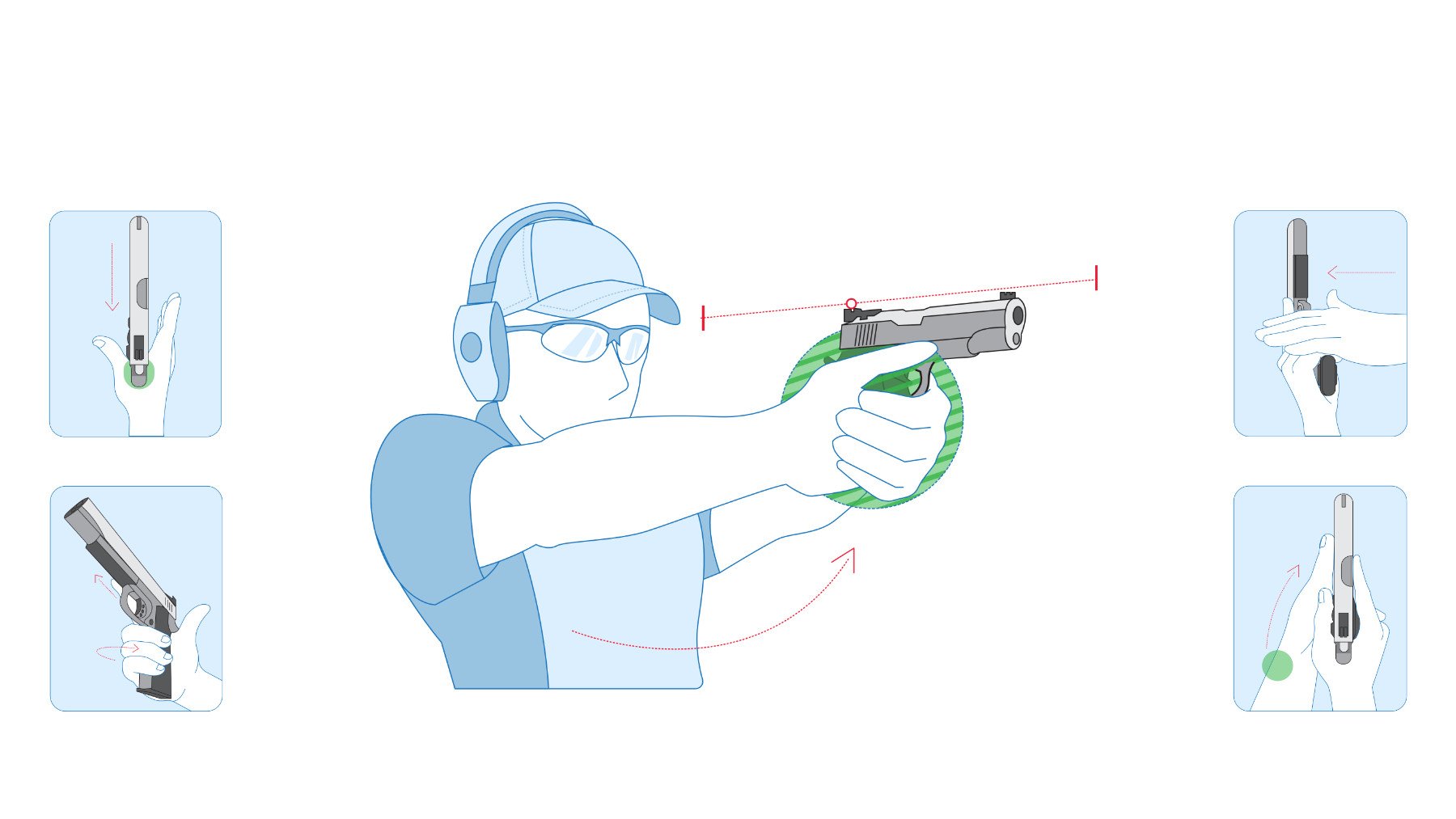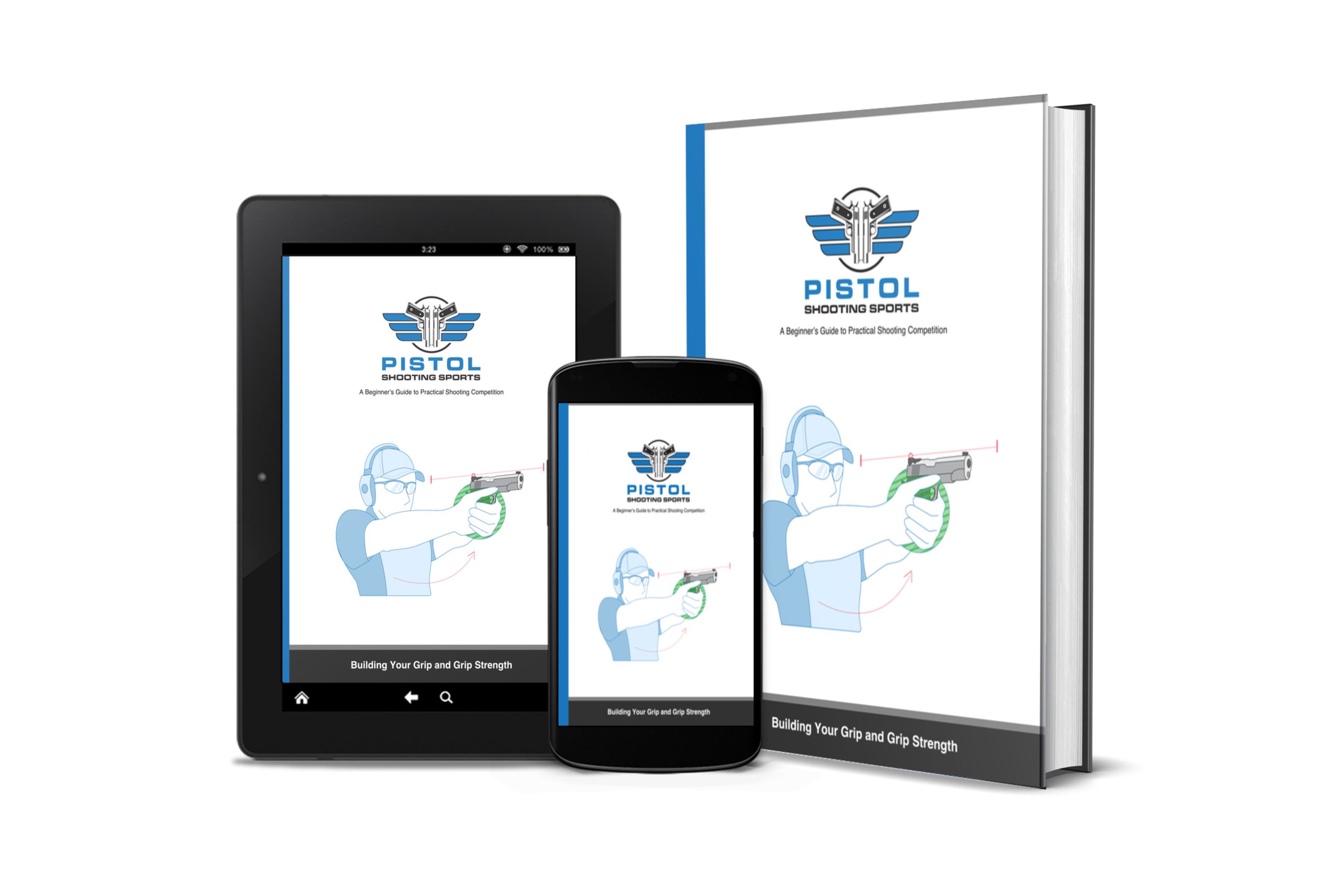
Building your Grip and Grip Strength
Your grip is instrumental in determining how consistently you are going to be able to shoot accurately.
A solid, consistent hold means you can focus on the shot—not wrestling with recoil.
You want to develop an effective technique so that you don't need to think about the mechanics. Start slowly with the fundamentals and build on each step.
Master Your Grip, Master Your Game
Build a grip that’s both reliable and repeatable. Strength in your hands and forearms lets you dominate recoil and return the sights to target time and again—with less effort and more confidence.
You want to develop an effective technique so that you don't need to think about the mechanics. Start slowly with the fundamentals and build on each step.
The grip is not something you “fix” once the gun is up in front of you. Your repeatable competition grip will start forming the instant your hand touches the gun and will be fully set before the sights settle on target.
A fast draw with a sloppy grip is wasted effort. The goal is to merge presentation speed and grip consistency into one smooth motion.
Why Strength & Technique Matter
Strong hands and forearms provide a competitor with a more stable platform for competitive shooting. Building better grip strength translates to improved recoil control and the ability to keep the sights on target. From the range to competition, stronger finger flexors and shoulders can boost your accuracy, particularly when that strength is in balance with your body.
What are Finger Flexors?
Finger Flexors are the muscles in your forearm that let you curl your fingers toward your palm. They’re what power your grip. In shooting, strong finger flexors help you hold the gun firmly through recoil, keep sights aligned, and maintain control over longer strings of fire without your hands fatiguing.
Research & Findings
Research confirms that strong finger flexors significantly improve shooting reliability. For example, a study of elite air pistol shooters found that both average and peak finger flexor strength correlated with higher competition scores—prompting authors to recommend dedicated grip-strength training programs. Other work shows that shooters with stronger finger muscles resist fatigue longer and maintain control farther into extended firing sessions.
A 2015 study published in PLOS ONE examined 46 senior male Olympic-level air pistol shooters. The researchers found significant correlations between competitive performance (60-shot score) and both average and peak finger flexor forces, even when controlling for body mass index (BMI). The study concluded that “hand grip strength training programs are necessary for performance in air pistol shooting.
A related 2019 paper in the Journal of Human Kinetics explored the relationships among finger flexor force, shoulder abduction strength, and shooting performance. The results reinforced that finger flexor strength is a key physical component linked to accuracy and stability in shooting.
A 2019 study involving German military personnel analyzed the effects of index finger fatigue during pistol use. Researchers measured maximum isometric finger strength before and after firing sessions and found that muscle fatigue frequently led to task failure—participants were unable to fire the weapon after repetitive use. Importantly, shooters with higher baseline finger strength experienced less fatigue and longer performance endurance.
A more recent 2023 article published by ABA International found that targeted hand and finger exercises can significantly enhance shooting performance, highlighting the practical value of strengthening those muscles.


